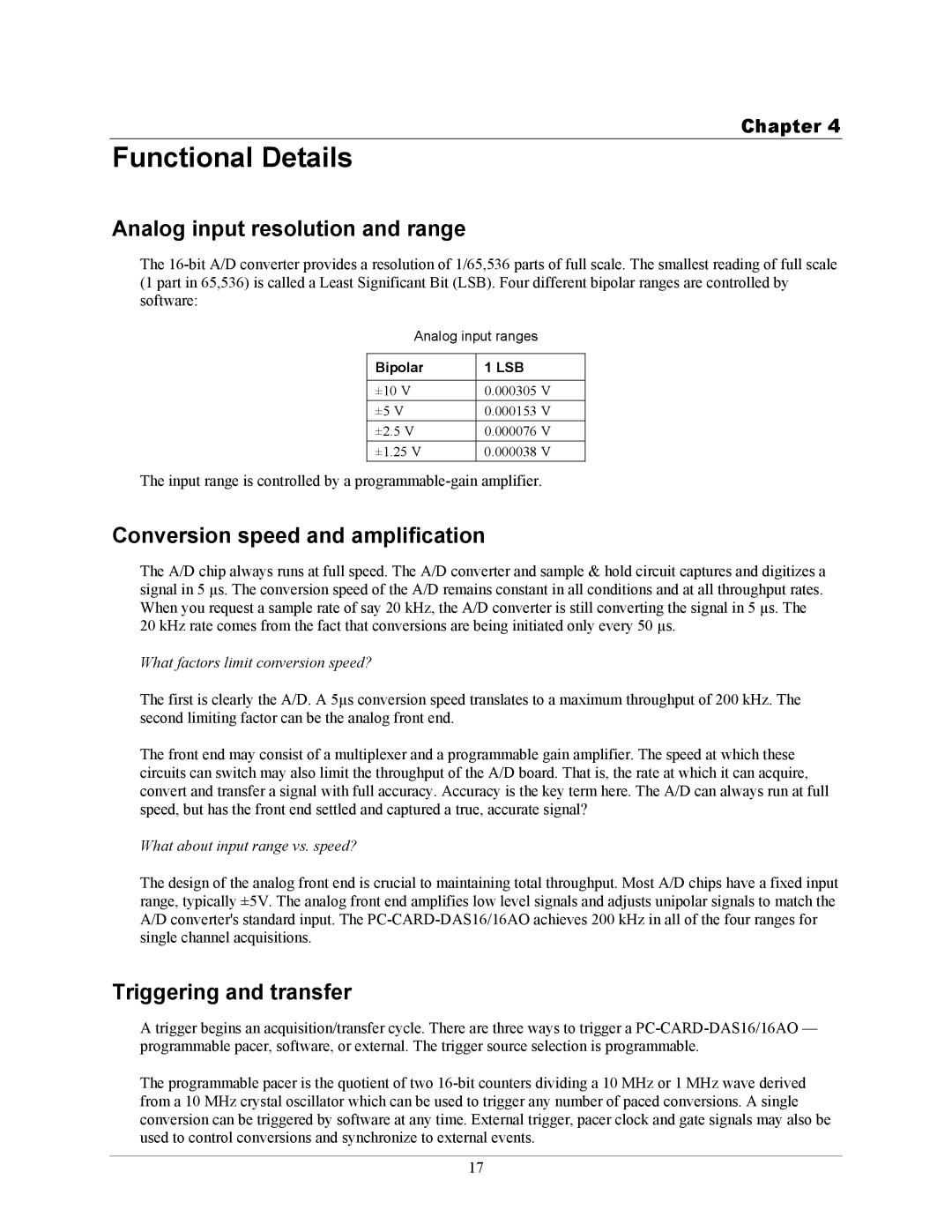
Chapter 4
Functional Details
Analog input resolution and range
The
Analog input ranges
Bipolar | 1 LSB |
|
|
±10 V | 0.000305 V |
±5 V | 0.000153 V |
±2.5 V | 0.000076 V |
±1.25 V | 0.000038 V |
The input range is controlled by a
Conversion speed and amplification
The A/D chip always runs at full speed. The A/D converter and sample & hold circuit captures and digitizes a signal in 5 µs. The conversion speed of the A/D remains constant in all conditions and at all throughput rates. When you request a sample rate of say 20 kHz, the A/D converter is still converting the signal in 5 µs. The 20 kHz rate comes from the fact that conversions are being initiated only every 50 µs.
What factors limit conversion speed?
The first is clearly the A/D. A 5µs conversion speed translates to a maximum throughput of 200 kHz. The second limiting factor can be the analog front end.
The front end may consist of a multiplexer and a programmable gain amplifier. The speed at which these circuits can switch may also limit the throughput of the A/D board. That is, the rate at which it can acquire, convert and transfer a signal with full accuracy. Accuracy is the key term here. The A/D can always run at full speed, but has the front end settled and captured a true, accurate signal?
What about input range vs. speed?
The design of the analog front end is crucial to maintaining total throughput. Most A/D chips have a fixed input range, typically ±5V. The analog front end amplifies low level signals and adjusts unipolar signals to match the A/D converter's standard input. The
Triggering and transfer
A trigger begins an acquisition/transfer cycle. There are three ways to trigger a
The programmable pacer is the quotient of two
17
